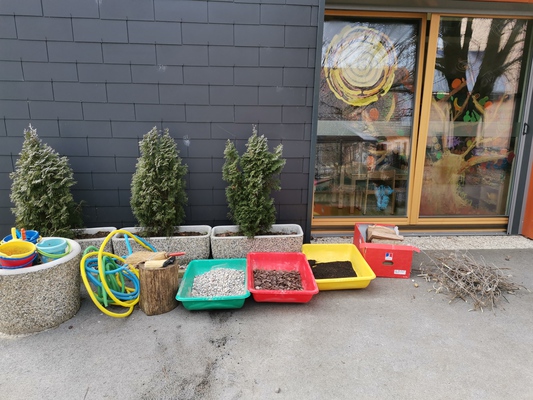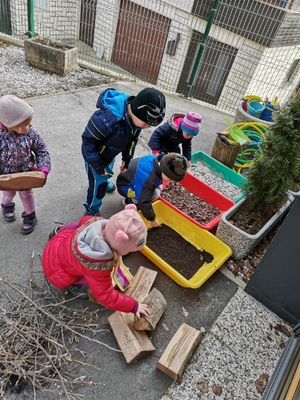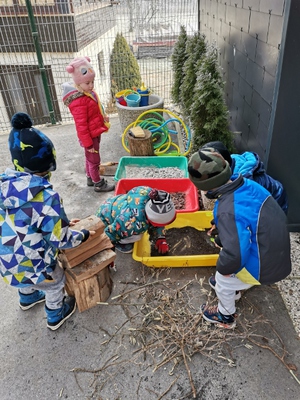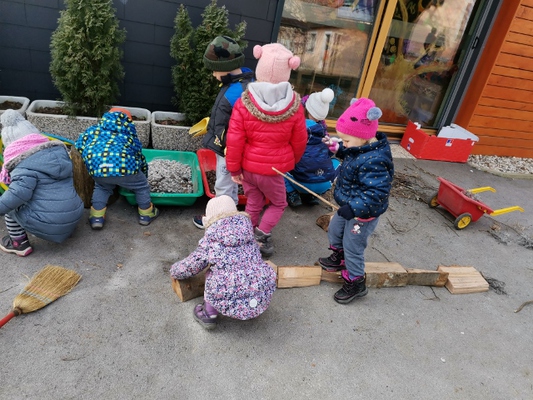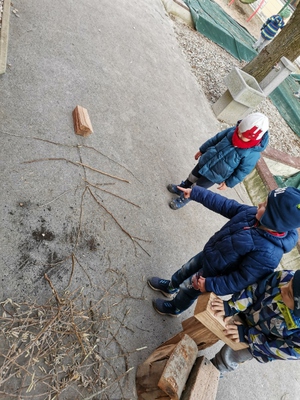Vrtec Vrhnika consists of 5 units. From every unit as least one group of children, aged 1 to 6 participates in the project. Teachers and children created or upgraded 5 outdoor spaces, where children have chance to play and learn outside. Because of the national laws and regulations these spaces, except one, cannot be permanent or have any built structures. So teachers with the help of children, their parents and local businesses created small play areas within playgrounds, where there are natural materials available. They can be moved and changed freely.
- Unit Želvica (Turtle)
Unit Želvica is exception to the above as it has large natural space right beside the playground. It consist of school garden with raised beds, pond, fruit trees, herb harden with climbing area, sensory path, compost heap, bug hotel, bat house and chicken coop. In recent months we added mud kitchen area which is still in the process of building. This space is separated from playground with a fence, so different standards as for the playground apply, but children have free access to it.
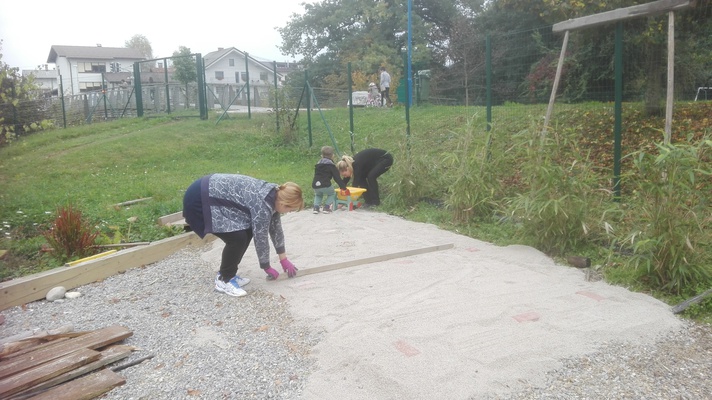
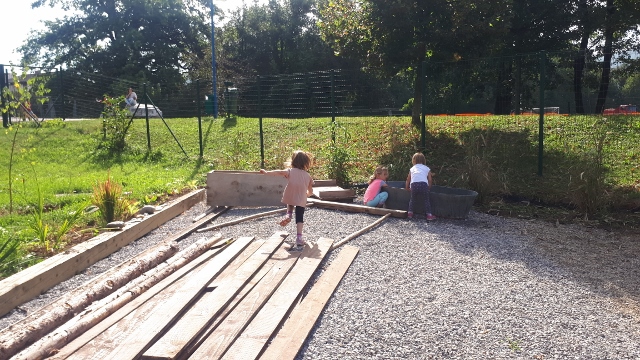

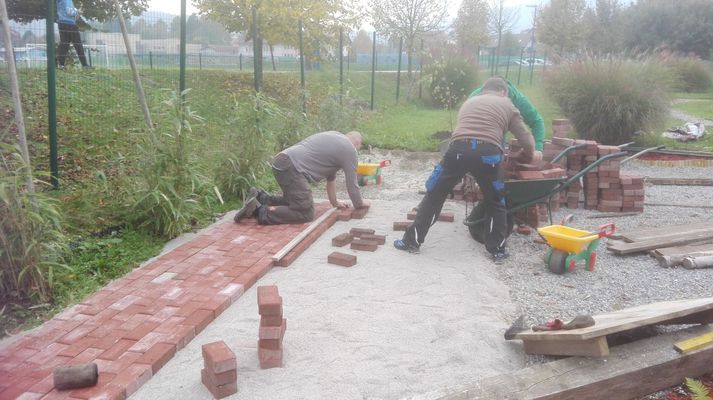
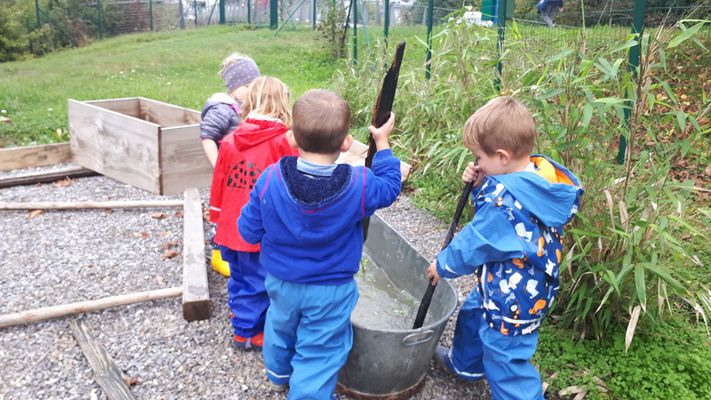
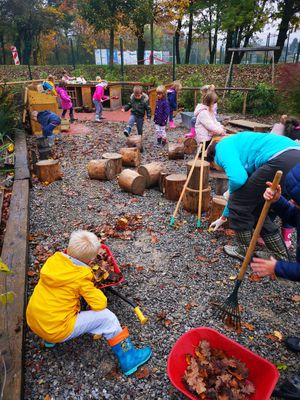
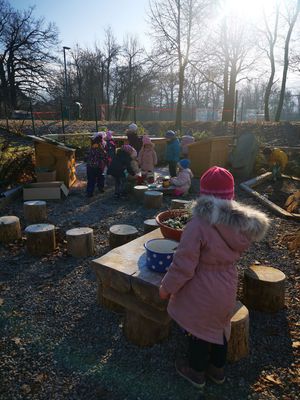
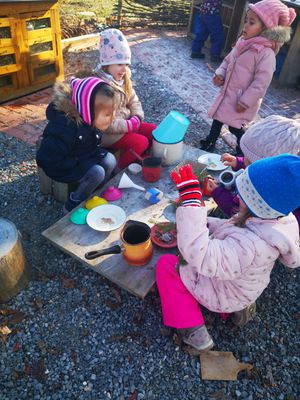
In our new mud kitchen children can use real pots and pans, plates, cups and kitchen utensils. They also have some tools available. There are edible plants and herb, used for pretend play, digging area and water area, where we gather rain water in and old bath tub.Tree stump allow us to do differnt group activities, such as reading stories, morning circle, discussions... We offten bring natural materials (sticks, stones, pinecones, nuts...) from the forest and there is planty of sand and dirt available. Mud kitchen is work in progress and we plan to add few more play aras this year.
Unit Žabica (Frog)
Most materials, used in their outside play area, were gathered by children, aged 3 to 6, in a nearby forest. Other were donated by parents. Children used them to create different paths and patterns.
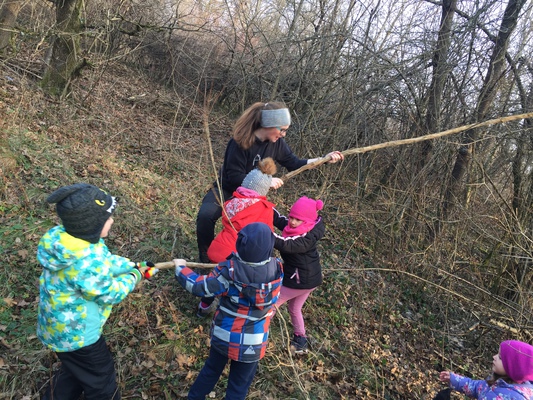
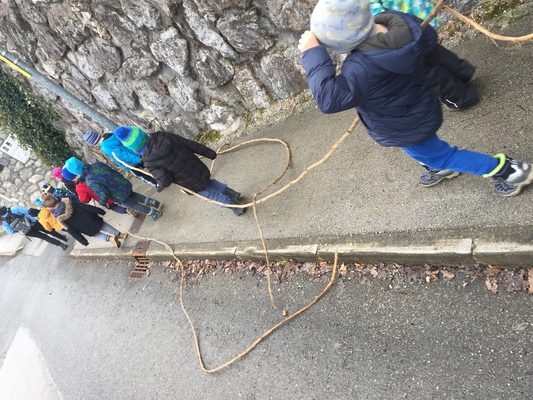
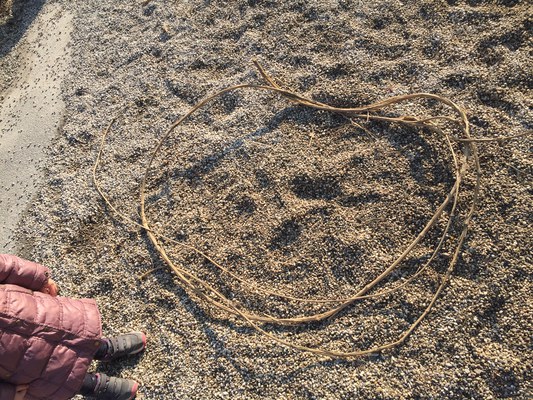
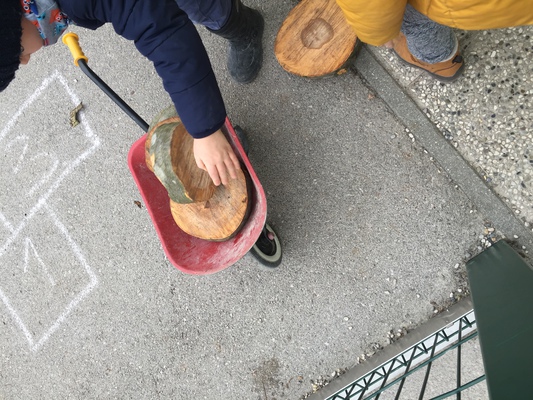
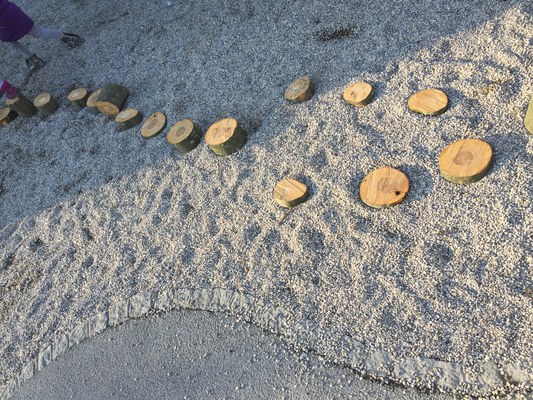
Younger children, aged 1-3, created their space on the terrace which they can acces from their classrooms. Natural sensory path was a big hit as little ones like movement activities best. Stick also came useful when drawing in the snow.
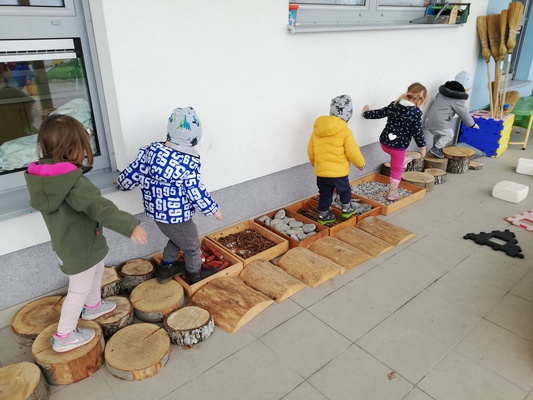
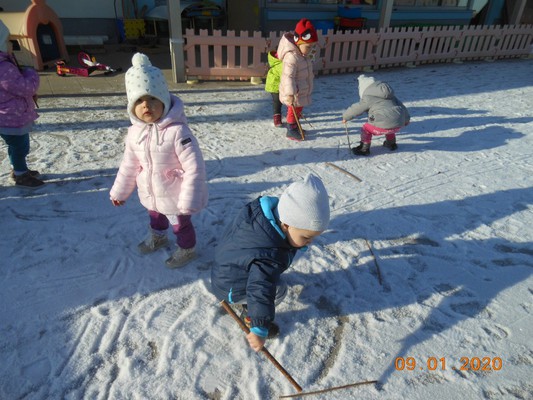
3. Unit Komarček (Mosquito)
Children are offered lots of different natural materials which they can use freely during their play. Materials are often replaced and changed based on availability and season.
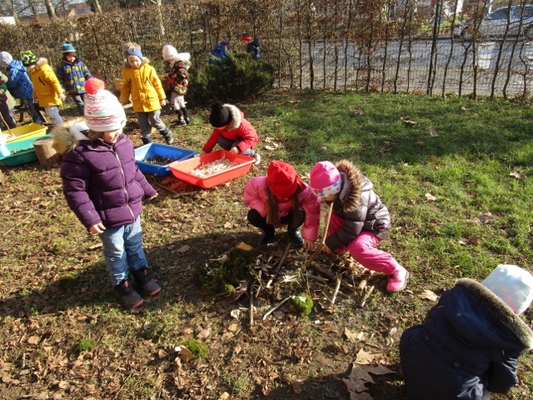
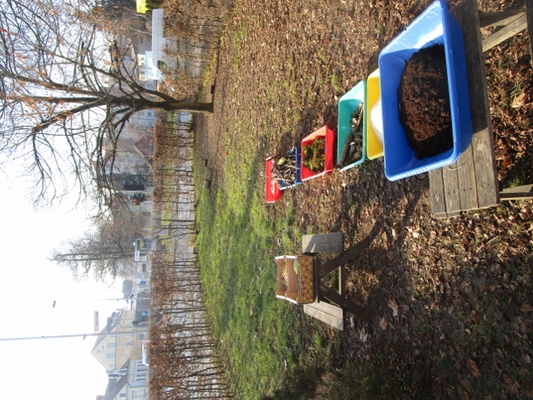
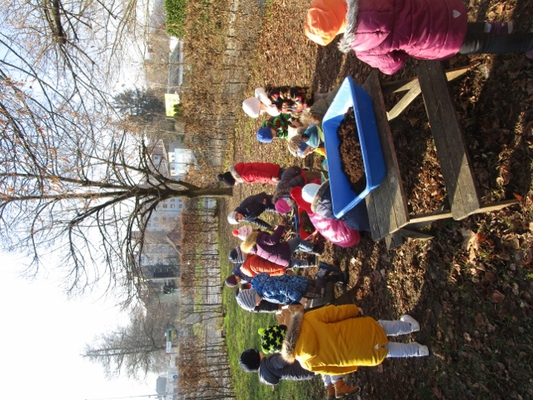
4. Unit Barjanček (inhabitant of the marshland)
Children aged 1-3 participated in building sensory path, which was later deconstructed and materials now used for free play. Their space is on grassy area behind the preschool building.
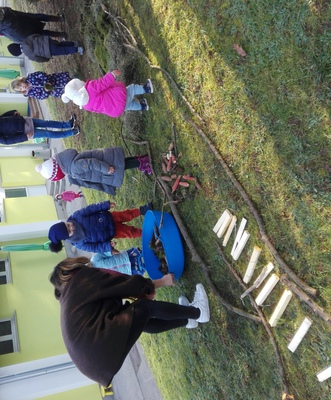
5. Unit Rosika (indigenous plant to the Slovenian marshland)
Again different natural materials are offered and explored in many ways. It again proves that outdoor play areas doesn't have to be complicated or expensive to build. Simple unstructured materials offer great potential for play.
